Pearl Zhu's Blog, page 1327
June 17, 2016
“Digital Agility” Book Introduction Chapter 5: Agile Dot Connections
 Agile is not only the ability to create changes, but also the capability to adapt to changes, and create a working environment to inspire creativity. If creativity is all about connecting the dots, and agility is about shaping a customer-centric organization, and then, how can we connect the dots between agile and other desired goals of the digital organization, such as quality, flexibility, innovation, etc. Because Agile is certainly not just a “development thing.” The goals of agile transformation lie with the organizations to overall improve organizational maturity.
Agile is not only the ability to create changes, but also the capability to adapt to changes, and create a working environment to inspire creativity. If creativity is all about connecting the dots, and agility is about shaping a customer-centric organization, and then, how can we connect the dots between agile and other desired goals of the digital organization, such as quality, flexibility, innovation, etc. Because Agile is certainly not just a “development thing.” The goals of agile transformation lie with the organizations to overall improve organizational maturity.
Agility vs. Strategy: Agility within and of itself is a strategy. Agility is the business ability to adapt to changes. Agility plays its part in the business dynamic as a measure of the enterprise’s capability to assess, align, adapt, and change to innovative launches, which create new avenues for revenue and the defined speed in which to capitalize on those opportunities. In the context of business technology, the resources are demands, capabilities, applications, technologies, risks, projects, and costs, and they are organized in portfolios. Still, many organizations keep these portfolios in silos. But they need to be managed as one that is constantly linked to the business vision and adaptable goals. Agile strategy means that business needs to cost justify the benefits of their IT investments, adhere to corporate and external compliance requirements, design and develop systems that provide a unique proposition and add to competitive advantage, also manage risk effectively.
Agile vs. DevOps: Agile is a big umbrella term refers to the mindset, philosophy and the set of principles to run business or manage project. DevOps is a deployment pipeline that stresses communication, collaboration, and integration between software developers and IT professionals. DevOps is the natural result of organizations taking agility past their development processes to encompass the entire software lifecycle, including deployment and maintenance. Both Agile and DevOps are customer-centric: Agile advocates bringing the voice of the customer right into the team in order to tear down the wall in the value stream and open up a dialog with the customer, to allow greater transfer of ideas both ways. DevOps breaks the invisible wall between development and operations, to open up a dialog and optimize the whole process in ways that perhaps were not possible before. Agile involves the customer in the development process to lower the risks, and DevOps involves the operation and test to streamline the test and deployment of the software, thus, further involving the customer and potentially lowering the risk even more.
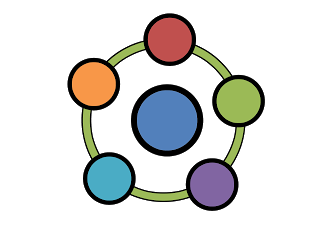 Agility vs. Quality: Agility is targeted for enhancing business on-demand. Quality is a function of scope, budget and resources. Agility is a model of performance without sacrificing the basic modularity of the business functions. Thus, the better the management control on delivery, the better the quality and vice versa. That’s why Agile approach involves users early in a process of creation and uses them continuously to assure quality. Agility should not be translated to sacrificing planning, management guidelines or life cycle of processes, etc. Remove the obstacles to quality, clearly describe what quality looks like, and practice the activities that produce quality results.
Agility vs. Quality: Agility is targeted for enhancing business on-demand. Quality is a function of scope, budget and resources. Agility is a model of performance without sacrificing the basic modularity of the business functions. Thus, the better the management control on delivery, the better the quality and vice versa. That’s why Agile approach involves users early in a process of creation and uses them continuously to assure quality. Agility should not be translated to sacrificing planning, management guidelines or life cycle of processes, etc. Remove the obstacles to quality, clearly describe what quality looks like, and practice the activities that produce quality results. There are more dot connections introduced in this chapter. Agile is a set of principles, and the principles are abstract to apply to vary circumstances when heading to the future. And agile has to be re-adjusted at different organization levels, Through connecting the wide dots between agility and other business goals, organizations can orchestrate their agile journey in a structured way and reap business benefits for the long term. Follow us at: @Pearl_Zhu
Published on June 17, 2016 23:46
“Leadership Master” Book Introduction Chapter IV: Inquisitive Leadership
The point is that framing the right problem is equally or even more important than solving it.
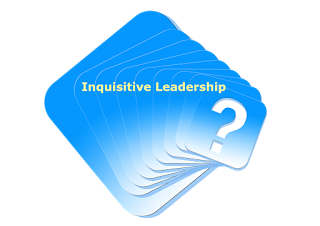 The business and world become over-complex and hyper-dynamic, how can leaders become more comfortable and confident in asking questions rather than giving answers. As in many instances, there is a perception that leaders should be the most experienced people and thus, have all of the answers. That’s a fallacy. Confidence comes from being comfortable in your role as a leader, value collective wisdom, not only provide answers but facilitate solutions. Should inquisitive leadership become a trend in the Digital Era?
The business and world become over-complex and hyper-dynamic, how can leaders become more comfortable and confident in asking questions rather than giving answers. As in many instances, there is a perception that leaders should be the most experienced people and thus, have all of the answers. That’s a fallacy. Confidence comes from being comfortable in your role as a leader, value collective wisdom, not only provide answers but facilitate solutions. Should inquisitive leadership become a trend in the Digital Era?
Asking the right questions helps to validate how through and deep your team’s thinking is on a particular issue: There is a strategic value of understanding businesses and being able to ask open-ended questions that evoke responses to enlighten or illustrate specific issues or topics. The art of questioning is to ignite innovative thinking, the essential to questioning also stimulates creative sides of our brains in order to find answers. The science of questioning is about asking the right question at the right time to the right person for the right information. It is also based on the art of listening, fact-finding, analysis, structured thinking, the objective evaluation and comparison, the progressive pursuit of the better solution. And it’s human’s cognitive improvement.
Ask the right questions for ensuring doing the right things before doing things right: Although almost all serious digital leaders and professionals today understand the importance of asking the right questions, it takes both courage and humility for them to ask questions, and it takes both insight and wisdom to ask the right questions. Because many times, you have to break down the status quo and break through the conventional wisdom, to keep informative and inquisitive. You need to self-reflect the management and problem-solving style: Do you always ask good questions, or do you just keep pushing and rushing up to find the answers without really understanding users’ true needs? It’s important for digital leaders and professionals to be inquisitive with learning agility, to ask the right questions using business's vocabulary, not only via technical lenses but also via business viewpoint.
 The "5 WHY," and open “WHY NOT” questions: The “5 WHYs” is an iterative question-asking technique used to explore the cause-and-effect relationships underlying a particular problem. The big “WHY” is always in the center of innovators’ question list. Innovative people are change agents who are not afraid to challenge the status quo and they have the unlimited curiosity to ask questions. They not only ask deep “WHY”s to diagnose the root cause of problems but also ask the positive “WHY NOT” to spur creativity. The refusal to be bound by constraints and limitations and a pursuit of possibilities rather than impossibilities seems to be a hallmark of great leadership achievements. They ask “What if we do things in a new way,” or, “How can I make things better for the whole?” A good leader asks the questions anyone would want to ask if only you had his or her perspective.
The "5 WHY," and open “WHY NOT” questions: The “5 WHYs” is an iterative question-asking technique used to explore the cause-and-effect relationships underlying a particular problem. The big “WHY” is always in the center of innovators’ question list. Innovative people are change agents who are not afraid to challenge the status quo and they have the unlimited curiosity to ask questions. They not only ask deep “WHY”s to diagnose the root cause of problems but also ask the positive “WHY NOT” to spur creativity. The refusal to be bound by constraints and limitations and a pursuit of possibilities rather than impossibilities seems to be a hallmark of great leadership achievements. They ask “What if we do things in a new way,” or, “How can I make things better for the whole?” A good leader asks the questions anyone would want to ask if only you had his or her perspective.
Leading by questioning. The point is that framing the right problem is equally or even more important than solving it. It is important to applying creative thinking, critical thinking, systems thinking, etc. in a recursive way for both problem identification and problem-solving. Leading by questioning and learning how to serve each other better to contribute to a better society with integrity, humility, respect, ethics, fairness, empathy, and sustainability is a significant challenge waiting for all leaders and today’s hyper-connected digital workforces.
"Digital Master" Book Series Slideshare Introduction " Leadership Master" Introduction Slideshare Presentation " Leadership Master " Introduction Blog "Leadership Master" Chapter I Introduction
"Leadership Master" Chapter II Introduction
"Leadership Master" Chapter III Introduction
"Leadership Master" Chapter IV Introduction
" Leadership Master " Amazon Order Link " Leadership Master " B&N Order Link " Leadership Master " IBook Order Link
Follow us at: @Pearl_Zhu
 The business and world become over-complex and hyper-dynamic, how can leaders become more comfortable and confident in asking questions rather than giving answers. As in many instances, there is a perception that leaders should be the most experienced people and thus, have all of the answers. That’s a fallacy. Confidence comes from being comfortable in your role as a leader, value collective wisdom, not only provide answers but facilitate solutions. Should inquisitive leadership become a trend in the Digital Era?
The business and world become over-complex and hyper-dynamic, how can leaders become more comfortable and confident in asking questions rather than giving answers. As in many instances, there is a perception that leaders should be the most experienced people and thus, have all of the answers. That’s a fallacy. Confidence comes from being comfortable in your role as a leader, value collective wisdom, not only provide answers but facilitate solutions. Should inquisitive leadership become a trend in the Digital Era?
Asking the right questions helps to validate how through and deep your team’s thinking is on a particular issue: There is a strategic value of understanding businesses and being able to ask open-ended questions that evoke responses to enlighten or illustrate specific issues or topics. The art of questioning is to ignite innovative thinking, the essential to questioning also stimulates creative sides of our brains in order to find answers. The science of questioning is about asking the right question at the right time to the right person for the right information. It is also based on the art of listening, fact-finding, analysis, structured thinking, the objective evaluation and comparison, the progressive pursuit of the better solution. And it’s human’s cognitive improvement.
Ask the right questions for ensuring doing the right things before doing things right: Although almost all serious digital leaders and professionals today understand the importance of asking the right questions, it takes both courage and humility for them to ask questions, and it takes both insight and wisdom to ask the right questions. Because many times, you have to break down the status quo and break through the conventional wisdom, to keep informative and inquisitive. You need to self-reflect the management and problem-solving style: Do you always ask good questions, or do you just keep pushing and rushing up to find the answers without really understanding users’ true needs? It’s important for digital leaders and professionals to be inquisitive with learning agility, to ask the right questions using business's vocabulary, not only via technical lenses but also via business viewpoint.
 The "5 WHY," and open “WHY NOT” questions: The “5 WHYs” is an iterative question-asking technique used to explore the cause-and-effect relationships underlying a particular problem. The big “WHY” is always in the center of innovators’ question list. Innovative people are change agents who are not afraid to challenge the status quo and they have the unlimited curiosity to ask questions. They not only ask deep “WHY”s to diagnose the root cause of problems but also ask the positive “WHY NOT” to spur creativity. The refusal to be bound by constraints and limitations and a pursuit of possibilities rather than impossibilities seems to be a hallmark of great leadership achievements. They ask “What if we do things in a new way,” or, “How can I make things better for the whole?” A good leader asks the questions anyone would want to ask if only you had his or her perspective.
The "5 WHY," and open “WHY NOT” questions: The “5 WHYs” is an iterative question-asking technique used to explore the cause-and-effect relationships underlying a particular problem. The big “WHY” is always in the center of innovators’ question list. Innovative people are change agents who are not afraid to challenge the status quo and they have the unlimited curiosity to ask questions. They not only ask deep “WHY”s to diagnose the root cause of problems but also ask the positive “WHY NOT” to spur creativity. The refusal to be bound by constraints and limitations and a pursuit of possibilities rather than impossibilities seems to be a hallmark of great leadership achievements. They ask “What if we do things in a new way,” or, “How can I make things better for the whole?” A good leader asks the questions anyone would want to ask if only you had his or her perspective. Leading by questioning. The point is that framing the right problem is equally or even more important than solving it. It is important to applying creative thinking, critical thinking, systems thinking, etc. in a recursive way for both problem identification and problem-solving. Leading by questioning and learning how to serve each other better to contribute to a better society with integrity, humility, respect, ethics, fairness, empathy, and sustainability is a significant challenge waiting for all leaders and today’s hyper-connected digital workforces.
"Digital Master" Book Series Slideshare Introduction " Leadership Master" Introduction Slideshare Presentation " Leadership Master " Introduction Blog "Leadership Master" Chapter I Introduction
"Leadership Master" Chapter II Introduction
"Leadership Master" Chapter III Introduction
"Leadership Master" Chapter IV Introduction
" Leadership Master " Amazon Order Link " Leadership Master " B&N Order Link " Leadership Master " IBook Order Link
Follow us at: @Pearl_Zhu
Published on June 17, 2016 23:42
“Leadership Master” Book Introduction Chapter 4: Inquisitive Leadership
 The business and world become over-complex and hyper-dynamic, how can leaders become more comfortable and confident in asking questions rather than giving answers. As in many instances, there is a perception that leaders should be the most experienced people and thus, have all of the answers. That’s a fallacy. Confidence comes from being comfortable in your role as a leader, value collective wisdom, not only provide answers but facilitate solutions.
The business and world become over-complex and hyper-dynamic, how can leaders become more comfortable and confident in asking questions rather than giving answers. As in many instances, there is a perception that leaders should be the most experienced people and thus, have all of the answers. That’s a fallacy. Confidence comes from being comfortable in your role as a leader, value collective wisdom, not only provide answers but facilitate solutions.
Asking the right questions helps to validate how through and deep your team’s thinking is on a particular issue: There is a strategic value of understanding businesses and being able to ask open-ended questions that evoke responses to enlighten or illustrate specific issues or topics. The art of questioning is to ignite innovative thinking, the essential to questioning also stimulates creative sides of our brains in order to find answers. The science of questioning is about asking the right question at the right time to the right person for the right information. It is also based on the art of listening, fact-finding, analysis, structured thinking, the objective evaluation and comparison, the progressive pursuit of the better solution. And it’s human’s cognitive improvement.
Ask the right questions for ensuring doing the right things before doing things right: Although almost all serious digital leaders and professionals today understand the importance of asking the right questions, it takes both courage and humility for them to ask questions, and it takes both insight and wisdom to ask the right questions. Because many times, you have to break down the status quo and break through the conventional wisdom, to keep informative and inquisitive. You need to self-reflect the management and problem-solving style: Do you always ask good questions, or do you just keep pushing and rushing up to find the answers without really understanding users’ true needs? It’s important for digital leaders and professionals to be inquisitive with learning agility, to ask the right questions using business's vocabulary, not only via technical lenses but also via business viewpoint.
 The "5 WHY," open “WHY NOT”: The “5 WHYs” is an iterative question-asking technique used to explore the cause-and-effect relationships underlying a particular problem. The big “WhY” is always in the center of innovators’ question list. People who innovate are change agents who are not afraid to challenge the status quo and they have the unlimited curiosity to ask questions. They not only ask deep “WHY”s to diagnose the root cause of problems, but also ask the positive “WHY NOT?” The refusal to be bound by constraints and limitations and a pursuit of possibilities rather than impossibilities seems to be a hallmark of great leadership achievements. They ask “What if we do things in a new way,” or, “How can I make things better for the whole?” A good leader asks the questions anyone would want to ask if only you had his or her perspective.
The "5 WHY," open “WHY NOT”: The “5 WHYs” is an iterative question-asking technique used to explore the cause-and-effect relationships underlying a particular problem. The big “WhY” is always in the center of innovators’ question list. People who innovate are change agents who are not afraid to challenge the status quo and they have the unlimited curiosity to ask questions. They not only ask deep “WHY”s to diagnose the root cause of problems, but also ask the positive “WHY NOT?” The refusal to be bound by constraints and limitations and a pursuit of possibilities rather than impossibilities seems to be a hallmark of great leadership achievements. They ask “What if we do things in a new way,” or, “How can I make things better for the whole?” A good leader asks the questions anyone would want to ask if only you had his or her perspective. The point is that framing the right problem is equally or even more important than solving it. It is important to applying creative thinking, critical thinking, systems thinking, etc. in a recursive way to the creative process for both problem identification and problem-solving. Leading by questioning and learning how to serve each other better to contribute to a better society with integrity, humility, respect, ethics, fairness, empathy, and sustainability is a significant challenge waiting for all leaders and today’s hyper-connected digital workforces. Follow us at: @Pearl_Zhu
Published on June 17, 2016 23:42
June 16, 2016
The Weekly Insight of the “Future of CIO” 6/16/2016
 The “Future of CIO” Blog has reached 1.3 million page views with 2800+ blog posting in 59+ different categories of leadership, management, strategy, digitalization, change/talent, etc. The content richness is not for its own sake, but to convey the vision and share the wisdom. Here is the weekly insight about digital leadership, IT Management, and Talent Management.
The “Future of CIO” Blog has reached 1.3 million page views with 2800+ blog posting in 59+ different categories of leadership, management, strategy, digitalization, change/talent, etc. The content richness is not for its own sake, but to convey the vision and share the wisdom. Here is the weekly insight about digital leadership, IT Management, and Talent Management.
The Weekly Insight of the “Future of CIO” 6/16/2016
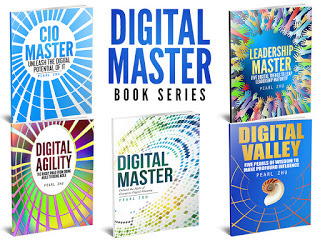 “Digital Master” Book Series Presentation The Digital transformation, like the computer technology revolution itself, is a long journey. “Digital Master” is the series of guide books (5+ Books) to perceive the multi-faceted impact digital is making to the business and workforce and help forward-looking businesses to navigate through the journey in a holistic way.
“Digital Master” Book Series Presentation The Digital transformation, like the computer technology revolution itself, is a long journey. “Digital Master” is the series of guide books (5+ Books) to perceive the multi-faceted impact digital is making to the business and workforce and help forward-looking businesses to navigate through the journey in a holistic way. New Book Preview - “Digital Agility” Slideshare Blog: Fundamentally, Agile is not just the methodology and practices for developing and managing software projects, it’s a set of principles to run today’s customer-centric organizations. But how can you differentiate the guide principles from rigid rules? What are necessary clarifications for having an in-depth understanding of Agile principles, and what is the hardest principle to follow?
Digital Master Book Series: New Book Preview “Leadership Master” Slideshare, Blog? Leadership is complex yet simple: Complex in that there are so many traits and characteristics that are considered when evaluating a leader. Simplicity in that the substantial of leadership never changes, it’s all about future and change; direction and dedication; influence and innovation. The purpose of the book: Leadership Master - Five Digital Trends to Leap Leadership Maturity is to convey the vision of digital leadership, share the insight about leadership maturity, and summarize five emergent digital leadership trends.
The Monthly Insight of Digital Board Room June 2016: At today’s “VUCA” digital dynamic, organizations face both unprecedented opportunities to grow and hyper-competition or great risks to survive. Therefore, the corporate board plays a more significant role in overseeing business strategy, setting principles and policies, and making the judgment on and assurance of corporate action within a framework of practical knowledge. So in order to drive digital transformation smoothly, how to run a digital savvy board and improve digital organization maturity?
Running Lightweight Digital IT to Catalyze Digital Transformation Organizations large or small are on the journey of digital transformation. Literally transformation is to radically change the nature of something. So digital transformation is a radical change of business, leverage digital technologies to renovate business processes, innovate organizational culture, reinvent digital leadership, reimagine the new possibilities and unleash the full business potential of the company. Forward-looking organizations are also empowering their IT leaders to lead more proactively and take advantage of lightweight digital technology to catalyze digital transformation.
Running a Highly Capable Digital IT Forward-looking IT organizations are shifting from a process-driven silos function to a capability-based digital engine of the organization, because often technology is the disruptive force of business transformation, and the information is one of the most valuable assets in modern business. IT needs to go beyond “keeping the light on,” and focus on adding value to catalyze business growth and improve organizational maturity. More specifically, how to run a highly capable digital IT?
Blogging is not about writing, but about thinking and innovating the new ideas; it’s not just about WHAT to say, but about WHY to say, and HOW to say it. It reflects the color and shade of your thought patterns, and it indicates the peaks and curves of your thinking waves. Unlike pure entertainment, quality and professional content takes time for digesting, contemplation and engaging, and therefore, it takes the time to attract the "hungry minds" and the "deep souls." It’s the journey to amplify diverse voices and deepen digital footprints, and it's the way to harness your innovative spirit.
Follow us at: @Pearl_Zhu
Published on June 16, 2016 23:26
“Leadership Master” Book Introduction Chapter 3: Visionary Leadership
 The substance of leadership never changes, it’s all about making a positive influence, providing direction, both for oneself and others. Fundamentally, leadership is more about future but starts at today. A visionary mind has the ability to think the past, perceive what is now and foresee the future. At the Digital Era with “VUCA” characteristics -Velocity, Uncertainty, Complexity, and Ambiguity, visionary leadership is in demand to navigate through uncharted water and blurred digital border and guide businesses toward the right direction.
The substance of leadership never changes, it’s all about making a positive influence, providing direction, both for oneself and others. Fundamentally, leadership is more about future but starts at today. A visionary mind has the ability to think the past, perceive what is now and foresee the future. At the Digital Era with “VUCA” characteristics -Velocity, Uncertainty, Complexity, and Ambiguity, visionary leadership is in demand to navigate through uncharted water and blurred digital border and guide businesses toward the right direction.
Vision differentiates transformational leaders from transactional managers: Vision is a foresight with a proactive understanding of cause and effect, not reactive seeing. It is a clear choice among future scenarios that advocates future trends and promotes certain behavior. The vision needs to be a good metaphor - 'the guiding light' so that people can see themselves and their work reflected in it. There are too many transactional managers who overly focus on short-term thinking due to the pressure of stakeholder, risk aversion, or ineffective strategy. A great leader is a visionary. Leadership is one’s ability to paint a vivid picture, a vision of a future state and motivate others to achieve it. The best organizations have both vision and future orientation. Visionary leaders carry an element of "creativity" and "align" their organization around that vision while remaining soundly anchored in their "core purpose" of being a business.
Leadership vision is to serve as an enabler to make profound influences: Vision is a foresight with a proactive understanding of cause and effect, not reactive sight: A vision is a future state of being. It is a clear choice among future scenarios that promotes certain behavior. Being a leader takes one to have a desire to do better than others in certain domains, to clear the path, whether that be the elimination of obstacles or to provide coaching and guidance and make an influence so that the talented employees are limited only by their imagination. Therefore, leadership vision is to serve as an enabler of leadership influence. The envisioning is the imagination's inner screen lighting up in the context of where the envisioning grows. Is imagination the key that transforms knowledge from folly to wisdom? The essence of vision is from the personal relatedness development, in its whole simplicity of perceptual connection of the moment. To envision is the focus coming in contact with the natural deployment, grown from the whole envisioning atmosphere you soak in daily life. Top leaders need to be visionaries: someone who can think strategically, assist in “seeing” and bringing clarity to the future within the business ecosystem and beyond.
 Leadership vision is to be a guiding light and show the direction: A vision is how you see the future unfolding, how you dream about what the future will look like from your standpoint. Vision comes to those who exercise themselves to understand what they hear, as they listen; to perceive what they see, as they look. Top leaders are supposed to be the guiding force in the organization and even with a broader scope, envisioning and leading it towards its future. Vision is where to go, strategy is how to get there. Vision is the future you want to realize from a coordinated effort. The strategy is the systematic plan that assists you in achieving desired outcomes. Being a leader means giving people confidence on where to go and how to get there, supporting them and also stretching them to live to their full potential, both individually and as members of a high performing team.
Leadership vision is to be a guiding light and show the direction: A vision is how you see the future unfolding, how you dream about what the future will look like from your standpoint. Vision comes to those who exercise themselves to understand what they hear, as they listen; to perceive what they see, as they look. Top leaders are supposed to be the guiding force in the organization and even with a broader scope, envisioning and leading it towards its future. Vision is where to go, strategy is how to get there. Vision is the future you want to realize from a coordinated effort. The strategy is the systematic plan that assists you in achieving desired outcomes. Being a leader means giving people confidence on where to go and how to get there, supporting them and also stretching them to live to their full potential, both individually and as members of a high performing team.
True vision is the reality of tomorrow, and true visionary leaders are future of leaders today. Vision is required at any given stage of an organization’s life span, so do economies. Without a continuous envisioning of a better future, society is doomed. A clear vision is circular than tunnel; multi-dimensional than single lenses, colorful than black and white. It should be vivid enough to tell the story and positive enough to overcome barriers. The “vision thing” does matter more nowadays.
Follow us at: @Pearl_Zhu
Published on June 16, 2016 23:17
“Digital Agility” Book Introduction Chapter 4: The Pitfalls in Agile Movement
 Agile is emerged as a philosophy to run today’s digital organization with a set of principles to refine business culture and management. However, Agile transformation is not an easy journey, Can Agile fail? What are the biggest problems for people or companies when they decide to go Agile -not just doing Agile, but being agile? What are the pitfalls to fail you, and how can you learn from your or other’s mistakes and make a continuous improvement?
Agile is emerged as a philosophy to run today’s digital organization with a set of principles to refine business culture and management. However, Agile transformation is not an easy journey, Can Agile fail? What are the biggest problems for people or companies when they decide to go Agile -not just doing Agile, but being agile? What are the pitfalls to fail you, and how can you learn from your or other’s mistakes and make a continuous improvement?
Agile doesn’t fail; people do: Agile is not a process you can implement but rather a change of culture. It sometimes fails because this is really difficult to nurture, and companies don’t realize benefits quickly enough. In the context of moving from traditional method to agile, failure always happens due to poor management. Regardless of the process, agile or not, to succeed in Agile, the entire organization has to be aligned. Agile is a way of delivery. The problem of failure is not knowing enough to assess what is actually better, and having a rigid process that’s developed by people outside the team; or it’s caused by misunderstanding about Agile principles: Often Agile is used as a synonym for “unprofessionalism,” “we don’t do estimates, we are agile,” “there is no documentation, we are agile,” etc. Overall speaking, it is the lack of periodic health check in terms of team level, program level, and enterprise level adoption.
Too much focus on individual features vs. wholeness: One of the most common failure with Agile projects comes from the tendency to think in terms of individual features vs. wholeness, which leads to all kinds of problems. Look at agile efforts from the business side, misalignment is a common failure. The thread from features to products to portfolios to business and product roadmap stray to separate paths leaving a well managed individual agile product efforts out in the weeds in relation to the other elements. It’s so easy to lose sight of the big picture. They cherry pick easy steps or processes of Agile but lose the sight of ultimate business goals. Thus, they can’t reap the full benefits of agile. In a nutshell, the poor assessment of where you are and where you are going to, combined with a bad planning on how you are going to achieve your goals.
 All failures should be learning experience, fail fast and fail forward: No one like failures, but often failure knocks our door before success. Some failures are good and some are bad. Regardless of if it’s good or bad, the outcome is not anticipated and expected. If you never fail, you are never taking any risks, or you are calling things successful that weren’t. Hence, one should not be paralyzed if there is a possible failure, and you should investigate it early and find out whether or not it can be addressed. There is no value in failure itself, be it fast or slow. The value is how you respond to failure, and how you respond is dependent upon what you learn from it. Only then can “failing fast” be utilized as a tactical advantage.
All failures should be learning experience, fail fast and fail forward: No one like failures, but often failure knocks our door before success. Some failures are good and some are bad. Regardless of if it’s good or bad, the outcome is not anticipated and expected. If you never fail, you are never taking any risks, or you are calling things successful that weren’t. Hence, one should not be paralyzed if there is a possible failure, and you should investigate it early and find out whether or not it can be addressed. There is no value in failure itself, be it fast or slow. The value is how you respond to failure, and how you respond is dependent upon what you learn from it. Only then can “failing fast” be utilized as a tactical advantage. There are many pitfalls on the way. One of the most important fundamentals of Agile is the emphasis of producing “Learning” Teams - not only learning about the products you are developing but also learning how best to work as a team. The organizational leadership should embrace agile philosophy, building agile practices iteratively and becoming a learning organization, fail fast and fail forward. Follow us at: @Pearl_Zhu
Published on June 16, 2016 23:12
June 15, 2016
“Leadership Master” Book Introduction Chapter 2: Creative Leadership
 Many say digital is the age of innovation. And creativity is the #1 wanted skill in the 21st century. Therefore, creative leadership has also emerged as one of the most important digital leadership trends to improve leadership effectiveness and accelerate business & society advancement. But more specifically, what is creative leadership all about, and who are creative leaders?
Many say digital is the age of innovation. And creativity is the #1 wanted skill in the 21st century. Therefore, creative leadership has also emerged as one of the most important digital leadership trends to improve leadership effectiveness and accelerate business & society advancement. But more specifically, what is creative leadership all about, and who are creative leaders?
Creative leaders are Out-of-Box thinker: Realizing that what has worked in the past isn’t today’s best solution and having the vision to see what is has now become. Creative leaders are forward thinking and capable of predicting future trends, manage the presence, and delegate the past. In each context, a creative leader is always conscious of the changes needed to connect the past with the future. They are flexible enough to adapt to the situation and the players involved. Creative leaders also resourceful, That is, the multidimensional competencies to formulate creative alternatives or solutions to resolve problems, to show versatility and adaptability in response to unpredictable or unanticipated circumstances.
Creative leadership is described as “Adaptability meets Agility”: The characteristics of Creative Leadership show the following dispositions: visionary, adaptable, competent, courageous, and curious, etc. Creative Leadership requires the strength to review a recommendation to a problem or decisions. It encourages the culture of innovation, with consistent expectation fo innovative solutions while leading people to grow beyond existing levels of performance and capability. It combines restless dissatisfaction with the current state coupled with the excitement of leading individuals or groups to find solutions that will produce great results.
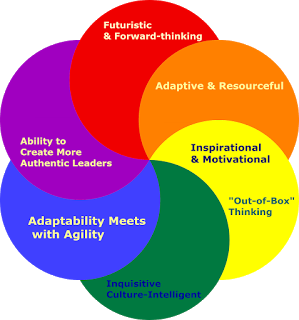 The qualities of innovative leaders: An innovative leader today is a superior problem solver, who has to create, manage, and exploit innovation networks and business ecosystem. An innovative leader has the transdisciplinary knowledge and cross-functional experience to connect the dots via unconventional connections, promote a healthy climate for innovation, inspire team members to create a portfolio of new ideas, concepts, and scenarios, and coach team members on innovation management practices and how to overcome the barriers to innovation. An effective innovation leader has the right mix of soft leadership qualities and hard business and technology expertise, with a strong focus, perseverance, and capabilities of doing the opposite of the crowd with confidence.
The qualities of innovative leaders: An innovative leader today is a superior problem solver, who has to create, manage, and exploit innovation networks and business ecosystem. An innovative leader has the transdisciplinary knowledge and cross-functional experience to connect the dots via unconventional connections, promote a healthy climate for innovation, inspire team members to create a portfolio of new ideas, concepts, and scenarios, and coach team members on innovation management practices and how to overcome the barriers to innovation. An effective innovation leader has the right mix of soft leadership qualities and hard business and technology expertise, with a strong focus, perseverance, and capabilities of doing the opposite of the crowd with confidence.Being a good manager is not enough, being a creative and effective leader is a journey full of pitfalls. It takes courage, persistence, and discipline to practice creativity as a high-level thinking, and manage innovation with higher success rate, and amplify leadership influence not via brute force, but through unique leadership strength.Follow us at: @Pearl_Zhu
Published on June 15, 2016 23:35
“Digital Agility - The Rocky Road from Doing Agile to Being Agile” Book Introduction Chapter 3 Agile Best and Next Practices
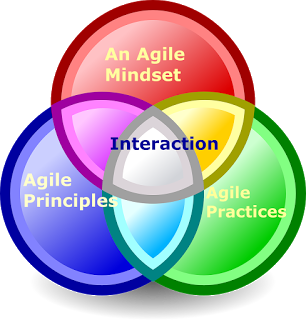 Although Agile has been adopted by mainstream and has been proven with advantage for better improvement and speed, how does a group or a company move from a typical waterfall environment to agile methodologies? And even more importantly, how to follow the set of agile principles and practice Agile up, to build an agile leadership team or boardroom, and practice agile philosophy to run an entire organization?
Although Agile has been adopted by mainstream and has been proven with advantage for better improvement and speed, how does a group or a company move from a typical waterfall environment to agile methodologies? And even more importantly, how to follow the set of agile principles and practice Agile up, to build an agile leadership team or boardroom, and practice agile philosophy to run an entire organization?
Select the right fit pilot project to experiment, learn, and improve: It is important to select the right fit pilot project to see how it worked to avoid those who are resistant to changing digging in their heels. Build a transition team with the right talent, it takes training, patience, and guidance. Everybody views change in a different way moving from waterfall to agile is a very good change. Clearly identify items that needed to be changed, modified, or fixed, to truly be Agile take a step-wise approach. Go back to the agile manifesto, particularly,”While there is value in the items on the right, we value the items on the left more.” It means doing what is required and stay focused on the end product.
Self-organizing and self-managing: Forward-thinking organizations today are on the journey of digital transformation, what’s the optimal digital management style? There is a whole spectrum between minimally self-organizing and fully self-managing. Self-organizing is about empowerment and trust. You know the team will deliver the best outcome, and give them the freedom to do it on their way. The team is self-organizing in being disciplined enough to do the work. A team can be self-organizing in determining the best and most efficient method of delivering the commitments they had made, and the business should also expect professionalism from the team. A self-organizing team, thus, has full authority on the practices, processes, tools, engineering methodologies team members would like to use to build the products.
 Engineering practices are the core: One of the biggest argument about Agile is about DISCIPLINE, Agile is not lack of discipline, but takes more discipline. You achieve the ability to be agile in product development by following engineering practices that allow you to adapt as efficiently as possible. The benefits of agility are not sustainable unless engineering practices are adopted in the earnest. While agile principles are essentially about people, it doesn’t mean that engineering problems can be ignored. As one of the Agile principles clarified: “continuous attention to technical excellence and good design enhances agility.”
Engineering practices are the core: One of the biggest argument about Agile is about DISCIPLINE, Agile is not lack of discipline, but takes more discipline. You achieve the ability to be agile in product development by following engineering practices that allow you to adapt as efficiently as possible. The benefits of agility are not sustainable unless engineering practices are adopted in the earnest. While agile principles are essentially about people, it doesn’t mean that engineering problems can be ignored. As one of the Agile principles clarified: “continuous attention to technical excellence and good design enhances agility.”There is no “one size fits all” agile approach. However, it is important to develop a set of best and next practices to scale up and improve agile maturity. Agile could be seen as the social practice of complexity theory, and as such, there are two aspects of the same reality and contributions on two complementary levels of dealing with the same issues: respond to customer requests quickly and make sure problems are really resolved. And Agile practices up mean more about a mind shift and a set of principles to run an agile organization. Follow us at: @Pearl_Zhu
Published on June 15, 2016 23:31
"CIO Master" Book Tuning: Running IT from “Busyness” to Betterment
The Role of IT today for many organizations is SOLUTIONARY for Information Management, Operation Automation, and Digital Orchestration.
 The majority of IT organizations still get stuck at the lower level of maturity, overloading, understaffed and struggle to deliver business value with the right speed. On the other side, businesses today rely more and more on technology; people tend to have a high expectation of digital flow, the IT department has more and more challenges to overcome for running at digital mode. Which approach shall you take to run IT from “busyness” to betterment?
The majority of IT organizations still get stuck at the lower level of maturity, overloading, understaffed and struggle to deliver business value with the right speed. On the other side, businesses today rely more and more on technology; people tend to have a high expectation of digital flow, the IT department has more and more challenges to overcome for running at digital mode. Which approach shall you take to run IT from “busyness” to betterment?
IT should involve co-creating business strategy: To make a smooth transition from “busyness” to betterment, IT needs to move from providing largely back-office support to becoming the prime facilitator, enabler, and orchestrator of the total business. An effective IT organization should more focus on vendor/customer relationship management, process optimization, project portfolio management, governance, business Intelligence/analytics. IT value is demonstrated through the rate of productivity increases, the rate of new product development, the rate of market share gains, the rate of customer approval and satisfaction gains, the rate of sales gains, etc. What should be focused on is the integration of IT into the business decisions and processes.This will allow IT to shine in both roles –as enabler and driver. IT needs to proactively work as an integral part of the business to capitalize on opportunity via leading the transformation, or IT delivers the best solution to the business problems which meet the business’s requirement or tailor customer’s needs. IT value-based management needs to be driven by concepts like collaborative value or collective advantage and multi-layer ROIs.
IT needs to master the art and science of when to say “YES,” when to say “NO” to internal customers requests: As the old adage may still be true, "you have not because you ask not." People tend to have a high expectation of digital flow, very little patience with technology issues. The amount of data to manage is huge and creates a lot of pressure. And there is a reputation in the company that "IT can't deliver”; or, most of IT projects are fixing the symptom, but not cure the root cause, most IT organizations still do not get respect from business, with the risk to lose accountability, be perceived as a reactive cost center. Sometimes IT staff and leaders become so conditioned to a presumed ‘order-taker’ role that they stop asking or don't ask because of past failure to get what they asked fulfilled. To reinvent its image and build up a long-term reputation as a value creator, IT should have a strategy to set the right priority, also have the courage to co-make orders, not just take orders, for avoiding the trap of "busyness" only, and achieving betterment. This requires an incredible ability to make decisions and to respond to and anticipate. Unfortunately often in IT there is the presumption of being able to do everything by yourself or with excel at the same old software. Being innovative and decisive means IT needs to always in a continuous improvement mode to explore the better way, leverage limited resources, and focus on reaching overall agility and maturity.
 The Role of IT today for many organizations is SOLUTIONARY for Information Management, Operation Automation, and Digital Orchestration: Although the real goal of IT, as is the case with every part of the organization, helping the business become, stay, and increase profitability! In order to become a better business partner, IT value-based management needs to be driven by concepts like collaborative value or collective advantage and multi-layer ROIs.The role of IT in the current business environment should be able to enable business outcomes. Business is no more interested in IT if it continually just keeps “busyness,” delivers projects without delivering value. CIOs should also seek out and partner with those leaders in the innovative companies who most agitate for speed and change. There are different aspects of a business change at different speed rate, they experience the pressures for change differently. By seeking out and developing a partnership value proposition for those leaders who most agitate for speed and change, CIOs will start to transform their organizations and the perception of IT, to go beyond just a service provider, but a solutionary of Information Management, and a conductor of digital orchestration.
The Role of IT today for many organizations is SOLUTIONARY for Information Management, Operation Automation, and Digital Orchestration: Although the real goal of IT, as is the case with every part of the organization, helping the business become, stay, and increase profitability! In order to become a better business partner, IT value-based management needs to be driven by concepts like collaborative value or collective advantage and multi-layer ROIs.The role of IT in the current business environment should be able to enable business outcomes. Business is no more interested in IT if it continually just keeps “busyness,” delivers projects without delivering value. CIOs should also seek out and partner with those leaders in the innovative companies who most agitate for speed and change. There are different aspects of a business change at different speed rate, they experience the pressures for change differently. By seeking out and developing a partnership value proposition for those leaders who most agitate for speed and change, CIOs will start to transform their organizations and the perception of IT, to go beyond just a service provider, but a solutionary of Information Management, and a conductor of digital orchestration.
In order to lead digital transformation, IT has to transform itself first, from “busyness” to betterment, from cost center to value creator; from a back office maintenance function to a value creating innovation engine; and from an order taker to a strategy co-maker, in order to improve IT and overall business maturity.
CIO Master Order Link on Amazon CIO Master Ordre Link on Barner & Noble CIO Master Order Link On IBooks “CIO Master” Book Preview Quote Collection III “CIO Master” Book Preview Quote Collection II “CIO Master” Book Preview Quote Collection I, Slideshare Presentation “CIO Master” Book Preview Conclusion Running IT as Digital Transformer “CIO Master” Book Preview: Chapter 9 IT Agility “CIO Master” Book Preview: Chapter 8 Three "P"s in Running Digital IT “CIO Master” Book Preview: Chapter 7 IT Innovation Management “CIO Master” Book Preview: Chapter 6 Digital Strategy-Execution Continuum "CIO Master” Book Preview: Chapter 5 Thirteen Digital Flavored IT “CIO Master” Book Preview: Chapter 4 CIO as Talent Master Introduction “CIO Master” Book Preview: Chapter 3 “CIOs as Change Agent” Introduction “CIO Master” Book Preview: Chapter 2 “CIOs as Digital Visionary” Introduction “CIO Master” Book Preview: Chapter 1 “Twelve Digital CIO Personas” Introduction "CIO Master - Unleash the Digital Potential of IT" Introduction "CIO Master - Unleash the Digital Potential of IT" Book Preview
Follow us at: @Pearl_Zhu
 The majority of IT organizations still get stuck at the lower level of maturity, overloading, understaffed and struggle to deliver business value with the right speed. On the other side, businesses today rely more and more on technology; people tend to have a high expectation of digital flow, the IT department has more and more challenges to overcome for running at digital mode. Which approach shall you take to run IT from “busyness” to betterment?
The majority of IT organizations still get stuck at the lower level of maturity, overloading, understaffed and struggle to deliver business value with the right speed. On the other side, businesses today rely more and more on technology; people tend to have a high expectation of digital flow, the IT department has more and more challenges to overcome for running at digital mode. Which approach shall you take to run IT from “busyness” to betterment?
IT should involve co-creating business strategy: To make a smooth transition from “busyness” to betterment, IT needs to move from providing largely back-office support to becoming the prime facilitator, enabler, and orchestrator of the total business. An effective IT organization should more focus on vendor/customer relationship management, process optimization, project portfolio management, governance, business Intelligence/analytics. IT value is demonstrated through the rate of productivity increases, the rate of new product development, the rate of market share gains, the rate of customer approval and satisfaction gains, the rate of sales gains, etc. What should be focused on is the integration of IT into the business decisions and processes.This will allow IT to shine in both roles –as enabler and driver. IT needs to proactively work as an integral part of the business to capitalize on opportunity via leading the transformation, or IT delivers the best solution to the business problems which meet the business’s requirement or tailor customer’s needs. IT value-based management needs to be driven by concepts like collaborative value or collective advantage and multi-layer ROIs.
IT needs to master the art and science of when to say “YES,” when to say “NO” to internal customers requests: As the old adage may still be true, "you have not because you ask not." People tend to have a high expectation of digital flow, very little patience with technology issues. The amount of data to manage is huge and creates a lot of pressure. And there is a reputation in the company that "IT can't deliver”; or, most of IT projects are fixing the symptom, but not cure the root cause, most IT organizations still do not get respect from business, with the risk to lose accountability, be perceived as a reactive cost center. Sometimes IT staff and leaders become so conditioned to a presumed ‘order-taker’ role that they stop asking or don't ask because of past failure to get what they asked fulfilled. To reinvent its image and build up a long-term reputation as a value creator, IT should have a strategy to set the right priority, also have the courage to co-make orders, not just take orders, for avoiding the trap of "busyness" only, and achieving betterment. This requires an incredible ability to make decisions and to respond to and anticipate. Unfortunately often in IT there is the presumption of being able to do everything by yourself or with excel at the same old software. Being innovative and decisive means IT needs to always in a continuous improvement mode to explore the better way, leverage limited resources, and focus on reaching overall agility and maturity.
 The Role of IT today for many organizations is SOLUTIONARY for Information Management, Operation Automation, and Digital Orchestration: Although the real goal of IT, as is the case with every part of the organization, helping the business become, stay, and increase profitability! In order to become a better business partner, IT value-based management needs to be driven by concepts like collaborative value or collective advantage and multi-layer ROIs.The role of IT in the current business environment should be able to enable business outcomes. Business is no more interested in IT if it continually just keeps “busyness,” delivers projects without delivering value. CIOs should also seek out and partner with those leaders in the innovative companies who most agitate for speed and change. There are different aspects of a business change at different speed rate, they experience the pressures for change differently. By seeking out and developing a partnership value proposition for those leaders who most agitate for speed and change, CIOs will start to transform their organizations and the perception of IT, to go beyond just a service provider, but a solutionary of Information Management, and a conductor of digital orchestration.
The Role of IT today for many organizations is SOLUTIONARY for Information Management, Operation Automation, and Digital Orchestration: Although the real goal of IT, as is the case with every part of the organization, helping the business become, stay, and increase profitability! In order to become a better business partner, IT value-based management needs to be driven by concepts like collaborative value or collective advantage and multi-layer ROIs.The role of IT in the current business environment should be able to enable business outcomes. Business is no more interested in IT if it continually just keeps “busyness,” delivers projects without delivering value. CIOs should also seek out and partner with those leaders in the innovative companies who most agitate for speed and change. There are different aspects of a business change at different speed rate, they experience the pressures for change differently. By seeking out and developing a partnership value proposition for those leaders who most agitate for speed and change, CIOs will start to transform their organizations and the perception of IT, to go beyond just a service provider, but a solutionary of Information Management, and a conductor of digital orchestration.
In order to lead digital transformation, IT has to transform itself first, from “busyness” to betterment, from cost center to value creator; from a back office maintenance function to a value creating innovation engine; and from an order taker to a strategy co-maker, in order to improve IT and overall business maturity.
CIO Master Order Link on Amazon CIO Master Ordre Link on Barner & Noble CIO Master Order Link On IBooks “CIO Master” Book Preview Quote Collection III “CIO Master” Book Preview Quote Collection II “CIO Master” Book Preview Quote Collection I, Slideshare Presentation “CIO Master” Book Preview Conclusion Running IT as Digital Transformer “CIO Master” Book Preview: Chapter 9 IT Agility “CIO Master” Book Preview: Chapter 8 Three "P"s in Running Digital IT “CIO Master” Book Preview: Chapter 7 IT Innovation Management “CIO Master” Book Preview: Chapter 6 Digital Strategy-Execution Continuum "CIO Master” Book Preview: Chapter 5 Thirteen Digital Flavored IT “CIO Master” Book Preview: Chapter 4 CIO as Talent Master Introduction “CIO Master” Book Preview: Chapter 3 “CIOs as Change Agent” Introduction “CIO Master” Book Preview: Chapter 2 “CIOs as Digital Visionary” Introduction “CIO Master” Book Preview: Chapter 1 “Twelve Digital CIO Personas” Introduction "CIO Master - Unleash the Digital Potential of IT" Introduction "CIO Master - Unleash the Digital Potential of IT" Book Preview
Follow us at: @Pearl_Zhu
Published on June 15, 2016 23:27
Running IT from “Busyness” to Betterment
 The majority of IT organizations get stuck on the lower end of maturity, overloading, understaffed and struggle to deliver business value with the right speed. On the other side, businesses today rely more and more on technology; people tend to have a high expectation of digital flow, the IT department has more and more challenges to overcome for running at digital mode. Which approach shall you take to run IT from “busyness” to betterment?
The majority of IT organizations get stuck on the lower end of maturity, overloading, understaffed and struggle to deliver business value with the right speed. On the other side, businesses today rely more and more on technology; people tend to have a high expectation of digital flow, the IT department has more and more challenges to overcome for running at digital mode. Which approach shall you take to run IT from “busyness” to betterment?
IT should involve co-creating business strategy: To make a smooth transition from “busyness” to betterment, an effective IT organization should more focus on vendor/customer relationship management, process optimization, project portfolio management, governance, business Intelligence/analytics. IT needs to move from providing largely back-office support to becoming the prime facilitator, enabler, and orchestrator of the total business.IT value is demonstrated through the rate of productivity increases, the rate of new product development, the rate of market share gains, the rate of customer approval and satisfaction gains, the rate of sales gains, etc. What should be focused on is the integration of IT into the business decisions and processes. This will allow IT to shine in both roles –as enabler and driver. IT needs to proactively work as an integral part of the business to capitalize on opportunity via leading the transformation, or IT delivers the best solution to the business problems which meet the business’s requirement or tailor customer’s needs. IT value-based management needs to be driven by concepts like collaborative value or collective advantage and multi-layer ROIs.
IT needs to master the art and science of when to say “YES,” when to say “NO” to internal customers requests: As the old adage may still be true, "you have not because you ask not." People tend to have a high expectation of digital flow, very little patience with technology issues. The amount of data to manage is huge and creates a lot of pressure. Sometimes IT staff and leaders become so conditioned to a presumed ‘order-taker’ role that they stop asking or don't ask because of past failure to get what they asked fulfilled. And there is a reputation in the company that "IT can't deliver”; or, most of IT projects are fixing the symptom, but not cure the root cause, IT may still not get respect from business, with the risk to lose accountability, to run IT as a reactive cost center. To reinvent its image, IT should have a strategy to set the right priority, also have the courage to co-make orders, not just take orders, for achieving betterment. This requires an incredible ability to make decisions and to respond to and anticipate; Unfortunately often in IT there is the presumption of being able to do everything by yourself or with excel at the same old software.
 The Role of IT today for many organizations is solutionary for Information Management, Operation Automation, and Digital Orchestration: Although the real goal of IT, as is the case with every part of the organization, helping the business become, stay, and increase profitability! In order to become a better business partner, IT value-based management needs to be driven by concepts like collaborative value or collective advantage and multi-layer ROIs.The role of IT in the current business environment should be able to enable business outcomes. Business is no more interested in IT if it continually just keeps “busyness,”delivers projects without delivering value. CIOs should also seek out and partner with those leaders in the innovative companies who most agitate for speed and change. There are different aspects of a business change at different speed rate, they experience the pressures for change differently. By seeking out and developing a partnership value proposition for those leaders who most agitate for speed and change, CIOs will start to transform their organizations and the perception of IT.
The Role of IT today for many organizations is solutionary for Information Management, Operation Automation, and Digital Orchestration: Although the real goal of IT, as is the case with every part of the organization, helping the business become, stay, and increase profitability! In order to become a better business partner, IT value-based management needs to be driven by concepts like collaborative value or collective advantage and multi-layer ROIs.The role of IT in the current business environment should be able to enable business outcomes. Business is no more interested in IT if it continually just keeps “busyness,”delivers projects without delivering value. CIOs should also seek out and partner with those leaders in the innovative companies who most agitate for speed and change. There are different aspects of a business change at different speed rate, they experience the pressures for change differently. By seeking out and developing a partnership value proposition for those leaders who most agitate for speed and change, CIOs will start to transform their organizations and the perception of IT.
In order to lead digital transformation, IT has to transform itself first, from “busyness” to betterment, from cost center to value creator; from a back office maintenance function to an value creating innovation engine; and from an order taker to a strategy co-maker, in order to improve IT and overall business maturity.
Follow us at: @Pearl_Zhu
Published on June 15, 2016 23:27



